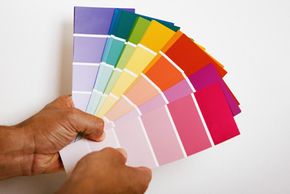It's hard for most of us to imagine a world without color, but something we could also have trouble grasping is that those colors -- whether the inviting blue of a clear summer sky or the cold impersonal gray of a waiting room -- can actually have a psychological and physical impact on us.
Advertisement
While everyone reacts to colors, a number of factors influence that reaction. Researchers haven't been able to pin down any universal classification system that will be able to predict how people will interpret and respond to the colors around them. This is because a person's culture, gender, age, emotional and mental state, specific experiences, mood -- as well as the appearance and combination of the colors themselves -- can all affect the reaction. And even then, those reactions might vary in type and intensity from person to person. This hasn't slowed the research down one bit, though, and the field of color psychology (closely entwined with that of color preference) is a popular one.
Research into color psychology isn't solely for academic purposes either. Many aspects of marketing focus on the impact colors have on people. Everything from logos to lobbies can be designed with color psychology in mind. People even consider the choice of colors in aspects of dress like fashion and uniforms and the décor of rooms like hospital rooms and nurseries.
On the next page, we'll spend some time examining how different colors affect us and see if there are any likely candidates someone could consider splashing on the walls to help a house sell.
Advertisement




